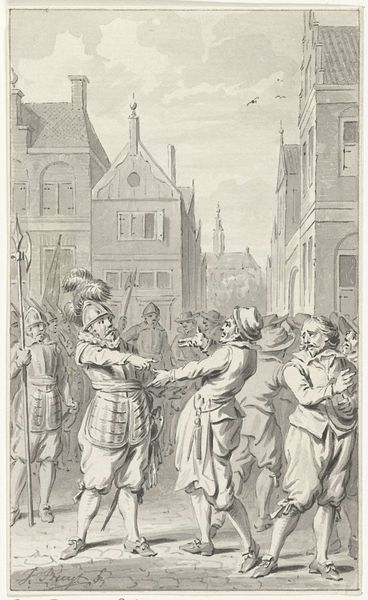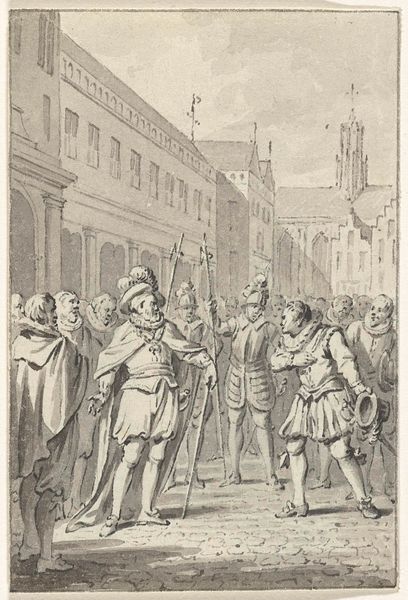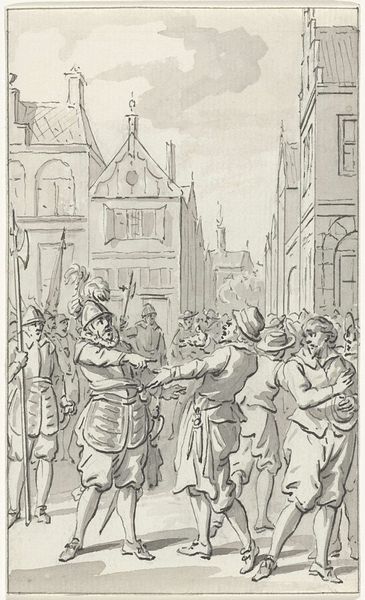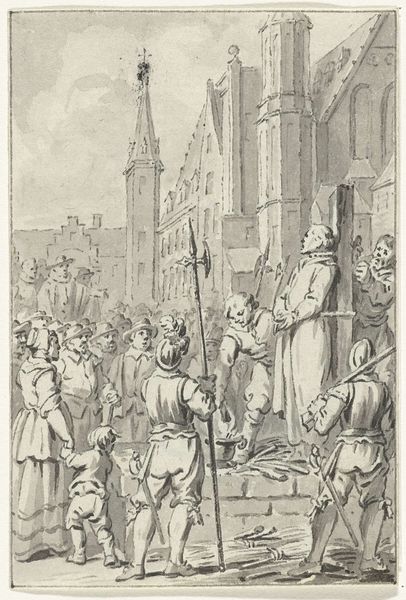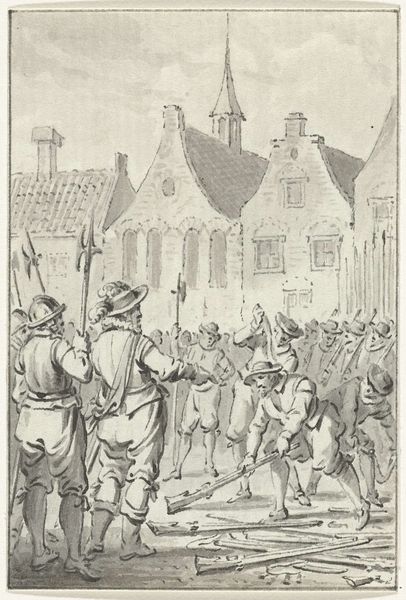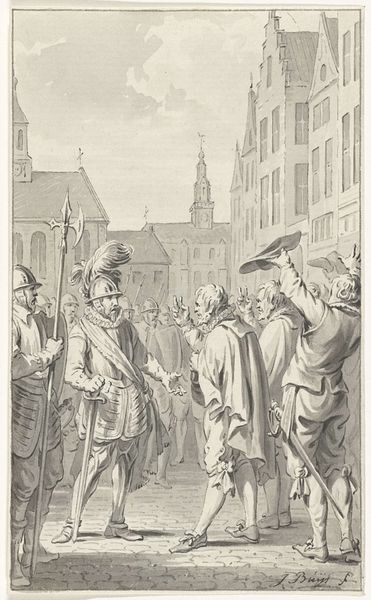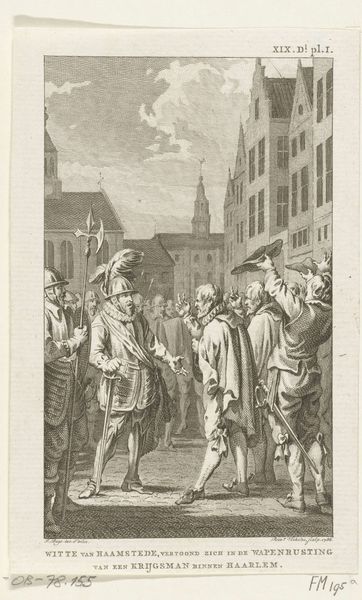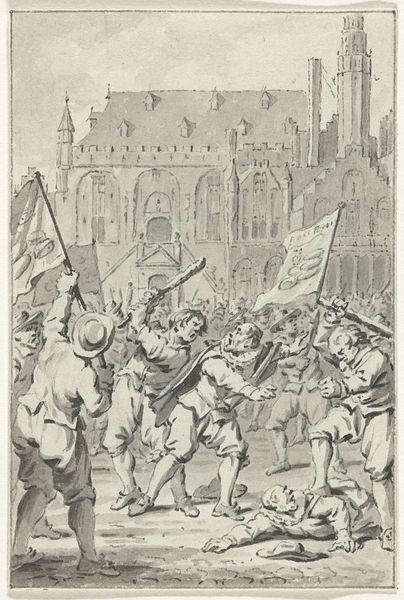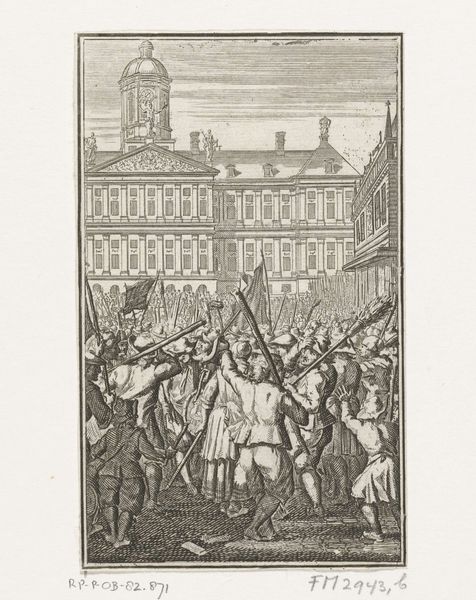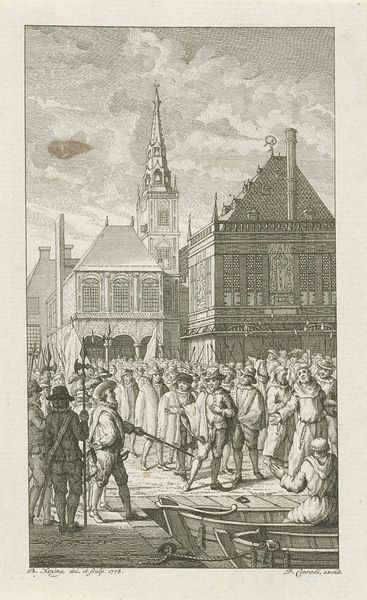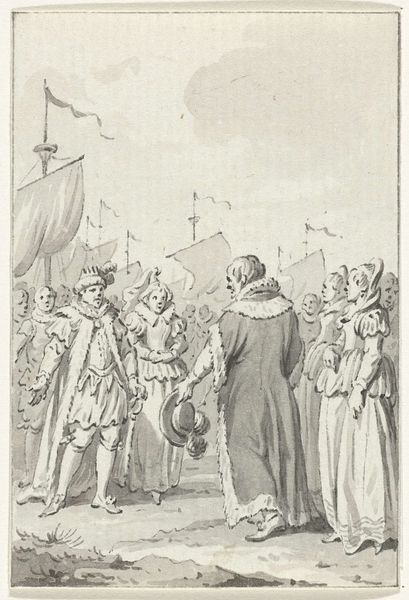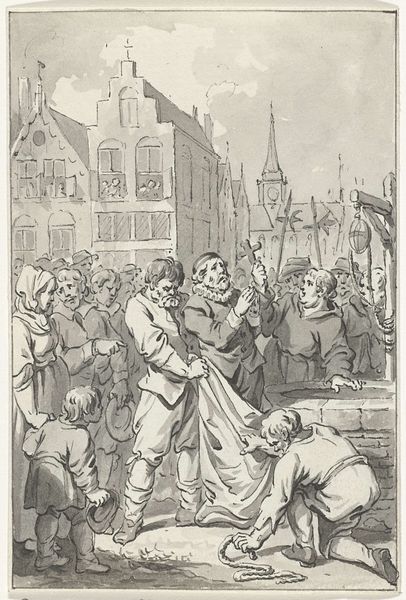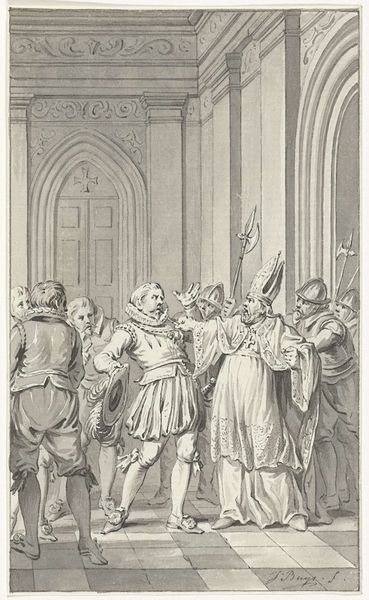
Admiraal Blois van Treslong gevangen gezet op het Gravensteen te Middelburg, 27 februari 1585 1780 - 1795
0:00
0:00
Dimensions: height 82 mm, width 56 mm
Copyright: Rijks Museum: Open Domain
Curator: The somber mood of this ink drawing really strikes me, especially given it depicts quite a dramatic event. Editor: Indeed. We're looking at Jacobus Buys' work, "Admiraal Blois van Treslong gevangen gezet op het Gravensteen te Middelburg, 27 februari 1585," likely created between 1780 and 1795. The work’s made with ink on paper. Curator: I'm drawn to the stark greyscale tones and the artist’s deliberate strokes. The figures, especially Treslong, seem burdened not just by their captivity but also by the weight of the artist’s mark-making. The artist made careful material choices here to really make a moving drawing. Editor: Absolutely, there’s a profound political dimension that resonates strongly. Buys places this event, the imprisonment of Admiral Treslong, within the larger context of Dutch history and struggles for independence. It begs us to look at structures of power and injustice, what it means to resist oppressive forces. Curator: From a purely art production point of view, it’s fascinating to consider how Buys utilized the simplicity of ink on paper to convey such complexity. His process involved creating shadows that felt more symbolic. It is as though his means are used to elevate his artistic ability and control. Editor: It also shows the power dynamics inherent in such moments: a figure of authority, being escorted—the power dynamic, is not necessarily stable, because a powerful person at one moment may find themself subject to other powers and oppressions. The scene captures a very specific historical moment, but also speaks to larger narratives of colonialism and control that unfortunately persist today. Curator: Exactly. The act of selecting and using humble, accessible materials – ink and paper – itself can be interpreted as a statement. Editor: Yes, I agree. Looking at art is not only an aesthetic experience but it should urge us to recognize our role in addressing injustices and fostering equality, not just admire aesthetic forms but use it as fuel. Curator: A thoughtful synthesis of both artistic means and socio-political meaning gives me fresh insight into this historical depiction. Editor: Agreed, let’s remember Treslong, not as just a figure in history, but also as someone who lived through particular structural injustices.
Comments
No comments
Be the first to comment and join the conversation on the ultimate creative platform.
